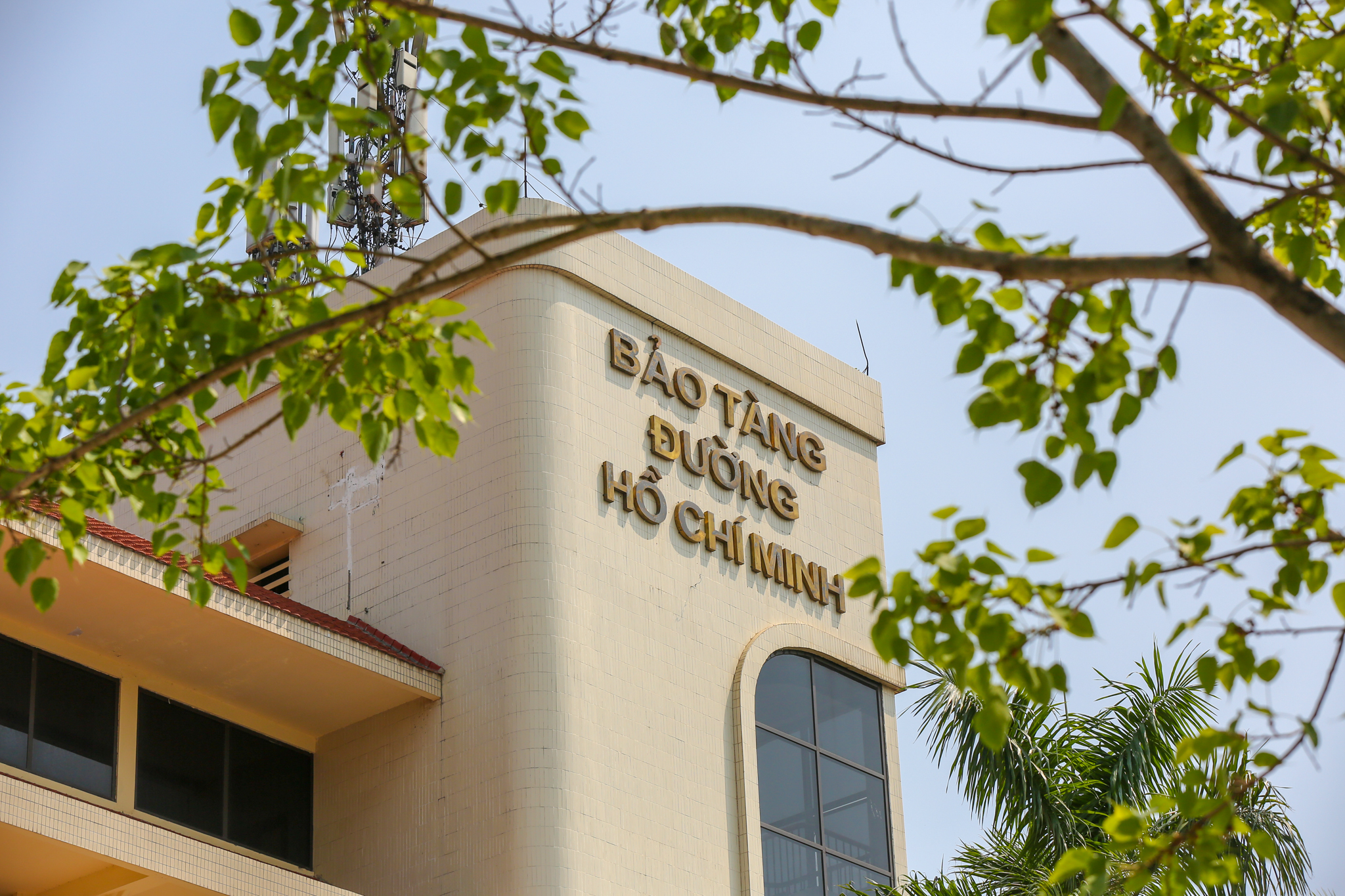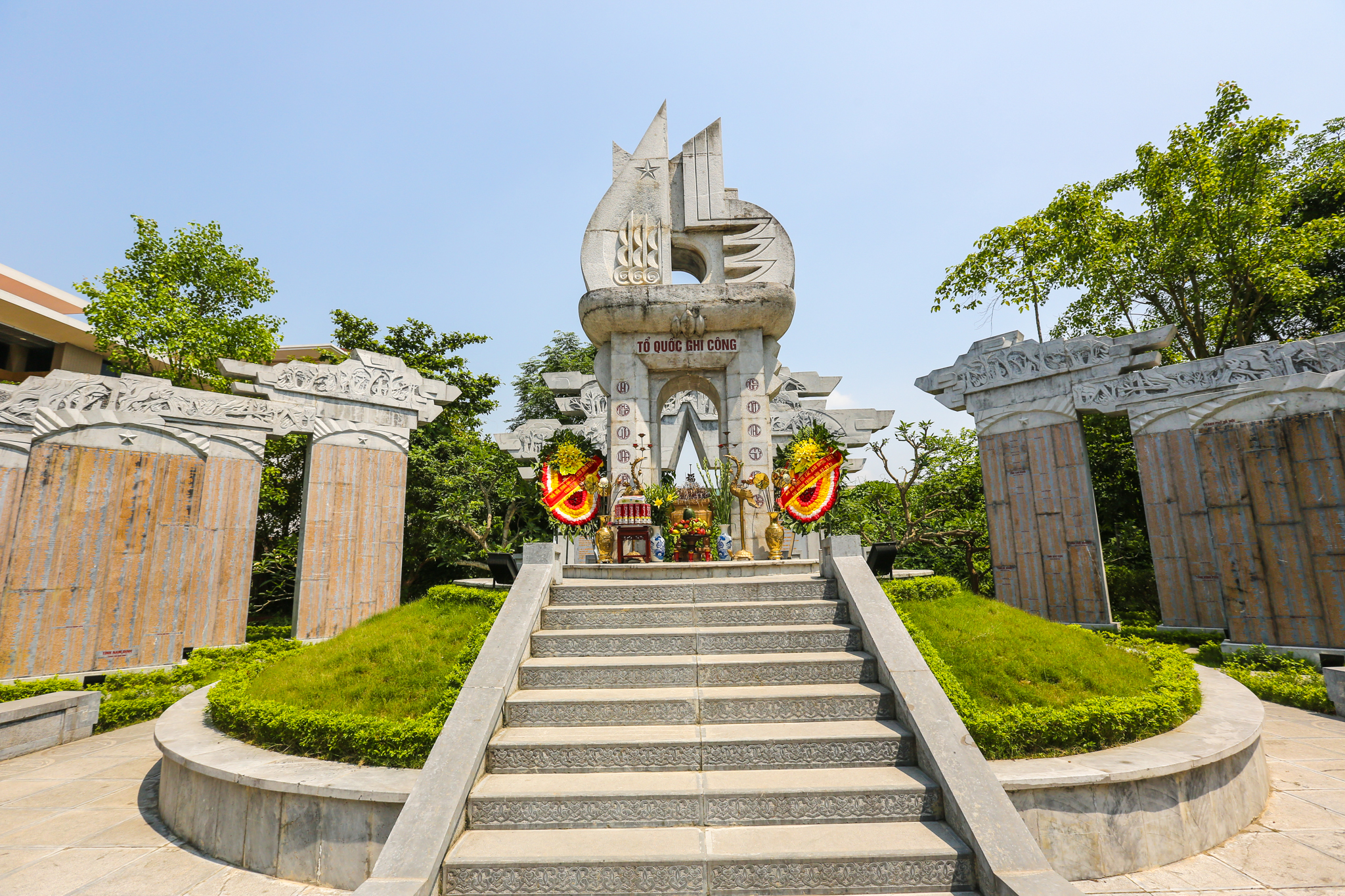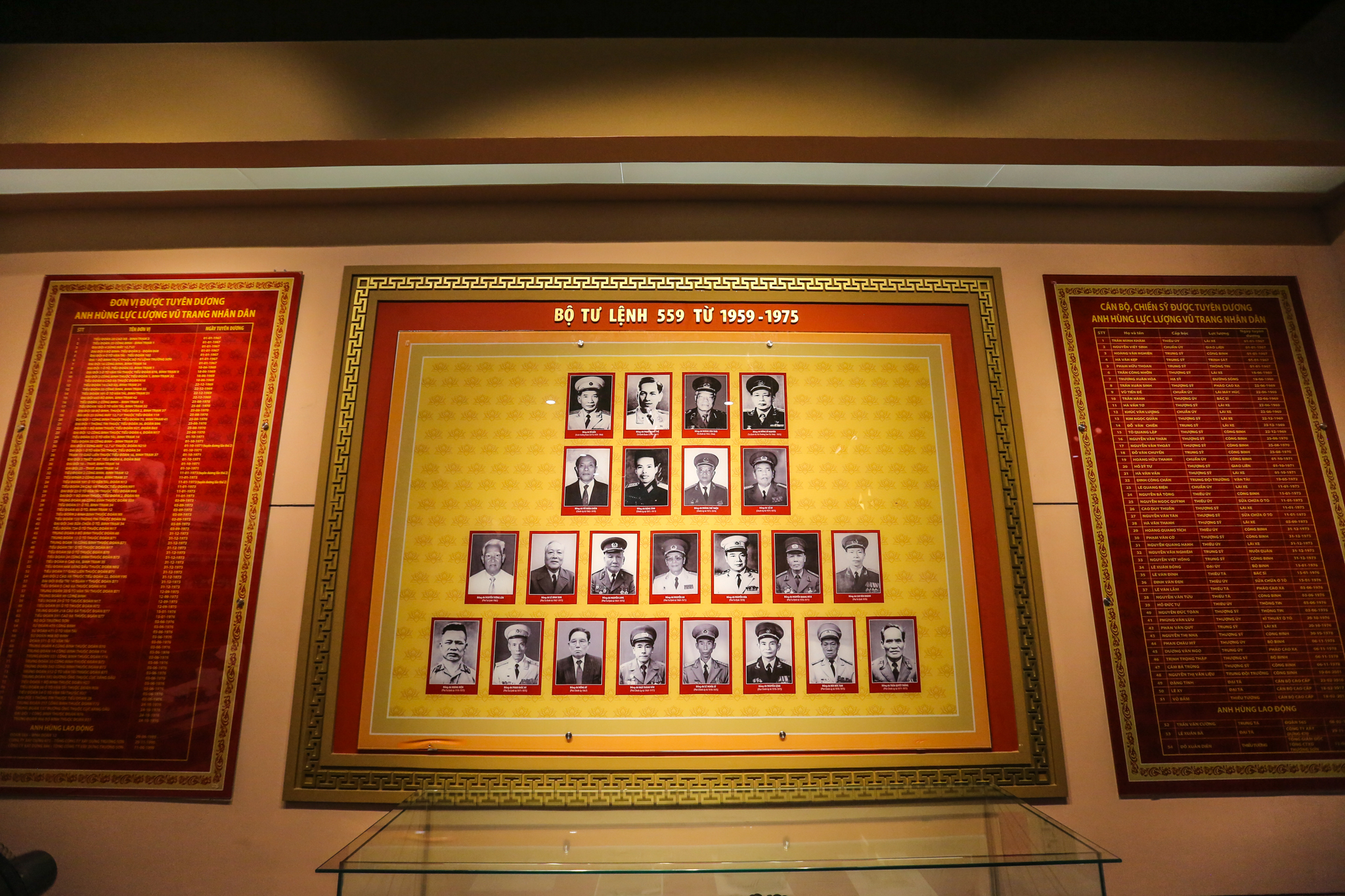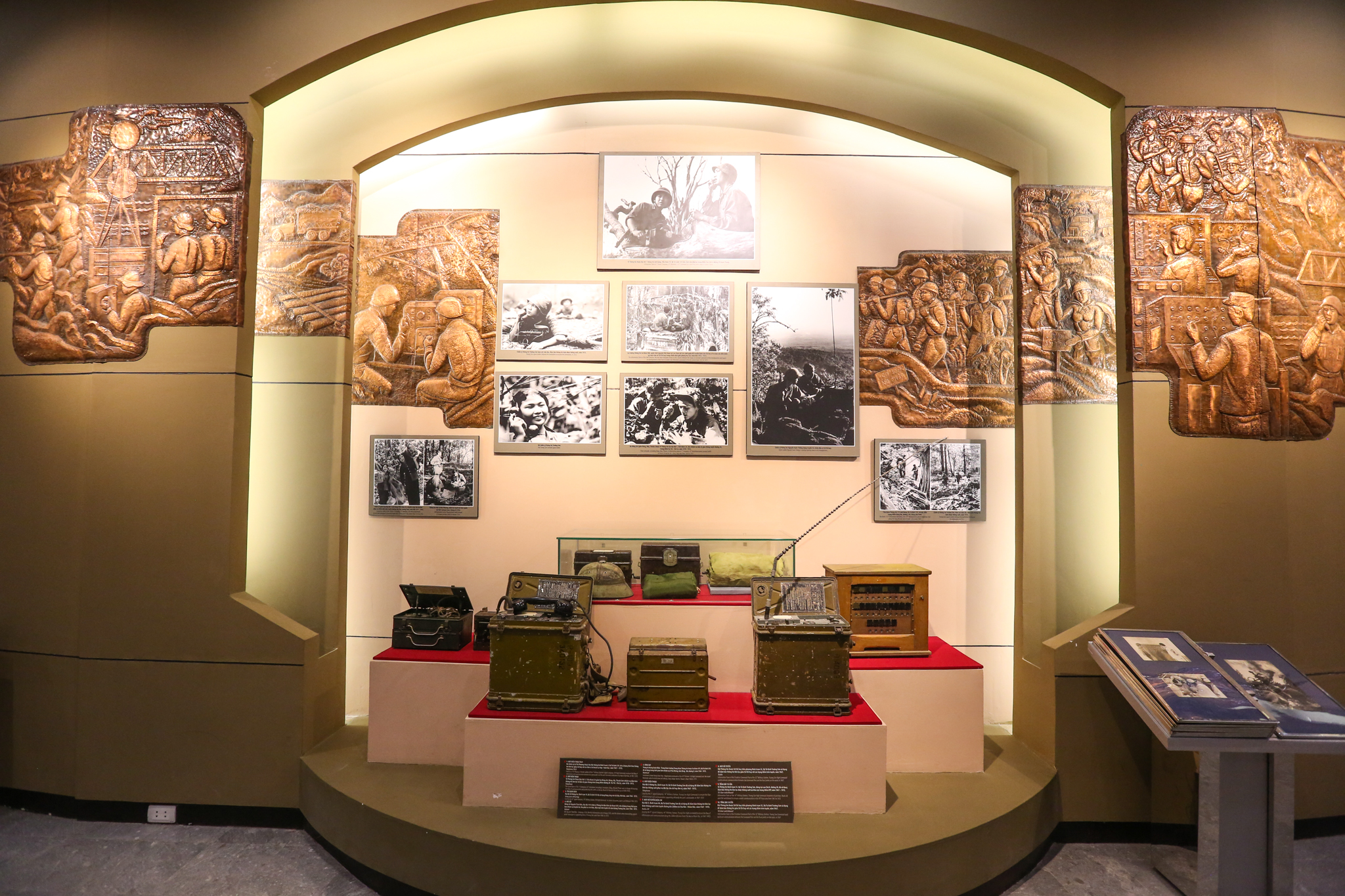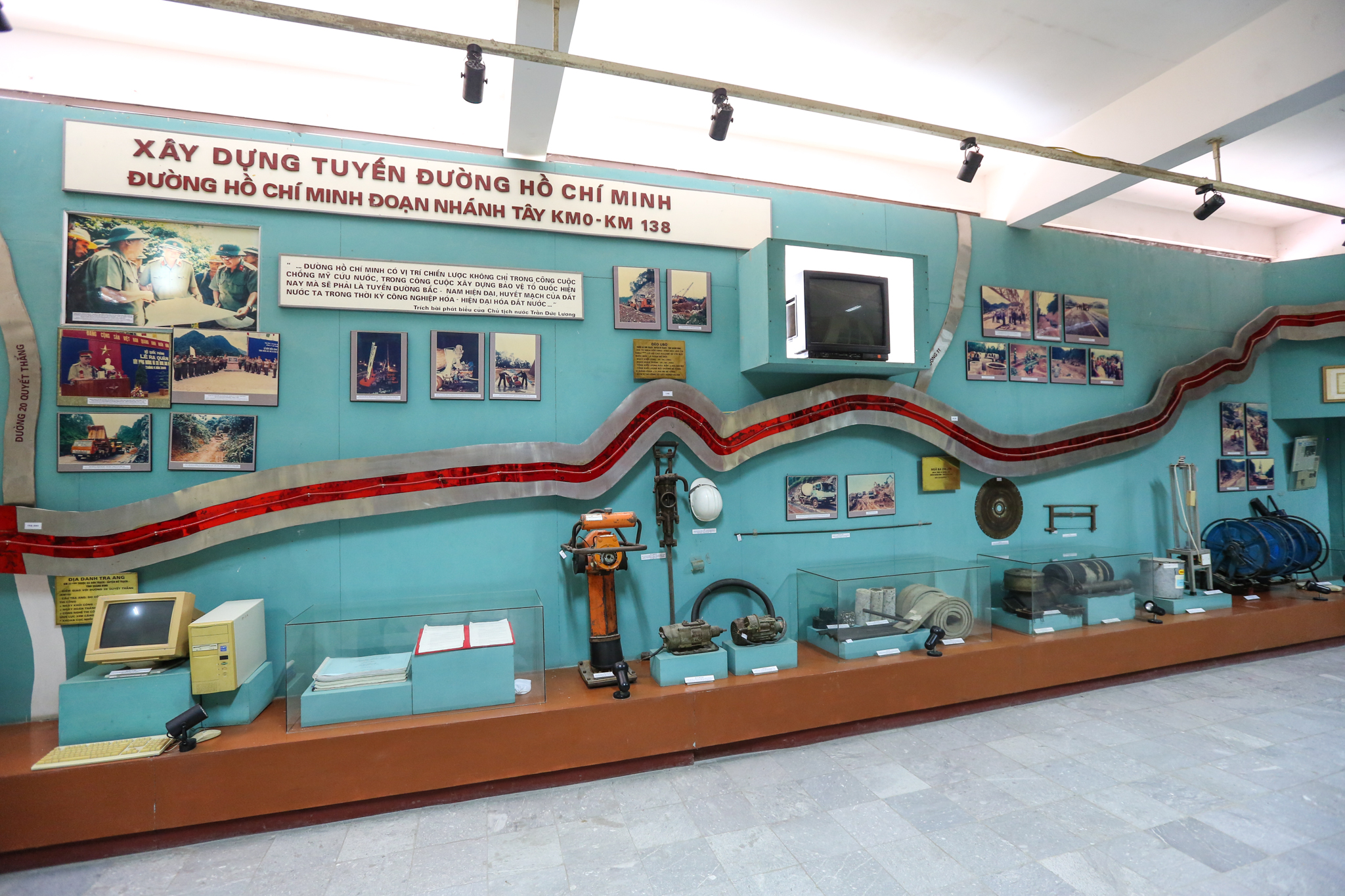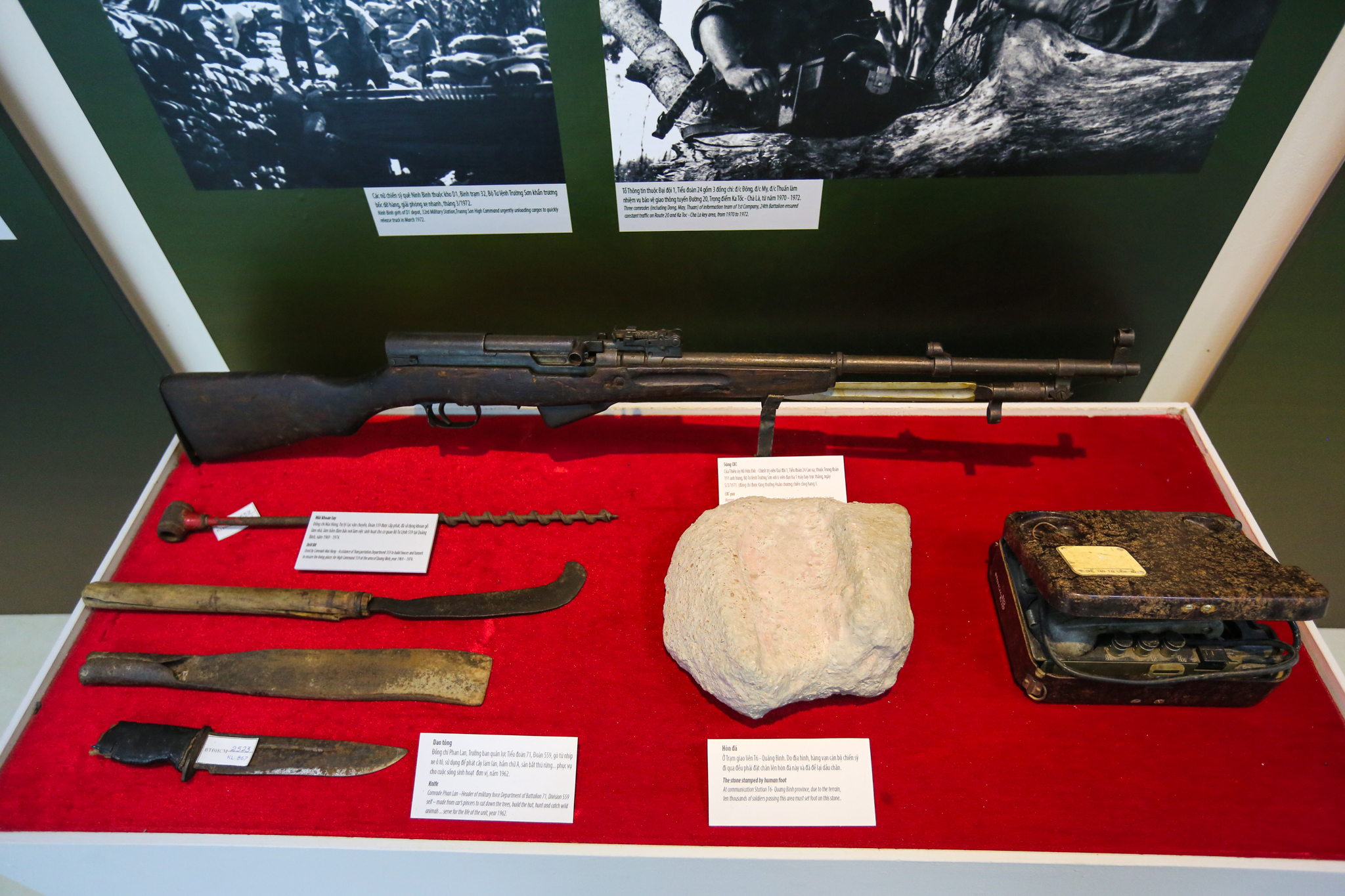“Together hanging a hammock in Truong Son jungle/In two ends, we’re so far away from each other/The way to the battlefield is beautiful this season/ I, in the East, miss you, in the West” – (Truong Son Dong, Truong Son Tay by Pham Tien Duat).
The date of May 19, 1959 became a historical milestone when the Party Central Committee decided to set up Corp 559 and build a strategic logistics line – the Truong Son Trail in the mainland and at sea. The Ho Chi Minh road was expanded, writing a legend of those who “split Truong Son mountain range to save the nation”.
Created from the war against the French colonialists, the Truong Son road was a small trail only allowing goods transport by bicycles.
In the anti-US war, the reality requires the expansion of the road to provide supplies to the southern battlefields. The 15thplenum of the Party Central Committee in May 1959 defined that “this is a work of strategic significance, directly impacting the liberation of the south and reunification of the nation”.
On May 5, 1959, a research office for the military supply to the South was set up and tasked to open a special North-South road through Truong Son jungle to transport soldiers and goods from the North to the South to serve the revolution of Vietnam as well as Laos and Cambodia. On August 13, 1959, the first batch of goods was carried to the South through the trail.
The Truong Son Trail became an artery connecting the North and the southern battlefields and a junction for the three Indochinese countries during their struggle for national independence.
A generation left their youth, blood and lives in the Truong Son jungle and mountain to write the everlasting legend of the nation.
Sixty years have gone, Major General Nguyen Ba Tong, a Hero of the Armed Forces and former Political Commissar of Corp 12, has yet to forget those days. On the occasion of the 60 anniversary of the Truong Son Trail, he granted VietnamPlus an interview recalling his memories of stories on the legendary trail.
Reporter: So far, many people believe that the building of the Truong Son Trail is an unbelievable miracle as Vietnamese people and soldiers constructed thousands of kilometers of road amidst extreme difficult conditions and strong enemy. In your opinion, what made that miracle?
Major General Nguyen Ba Tong: I remember that in 1968, we were ordered to move to the southern battlefield. But when we reached QuangBinh, we were asked to expandthe Truong Son trail.

At that time, the enemy crazily bombed the area. We mostly used hoes and shovels, and seldom explosives, to open the road. But we had strong determination.
Looking back to these days, we realize that the successful construction of the trail was a combination of strong will and determination of Truong Son soldiers and the creative direction of the Party and President Ho Chi Minh as well as the Central Military Commission. There were also great contributions by the people, especially those from ethnic minority groups living along the Truong Son mountain range, who protected and supported us. They even donated their land and houses for the road expansion. This showed the synergystrength of the nation that can overcome all difficulties and hardships.
Reporter: Commenting on the miracle of the Truong Son Trail, Maxwell Taylor, former head of the Advisory Council of the US Alliance, said that the US army failed to give proper evaluation of the strong spirit and sacrifice for the revolution of the Vietnamese people, thus their endeavours against the construction of the Ho Chi Minh Trail failed.” What do you think about that viewpoint?
Major General Nguyen Ba Tong:Initially when entering this war, the US side had different viewpoints from ours. They thought that their outstanding advantages in weapon and modern equipment would be able to squash us. But in reality, they felt increasingly difficult and impotent.
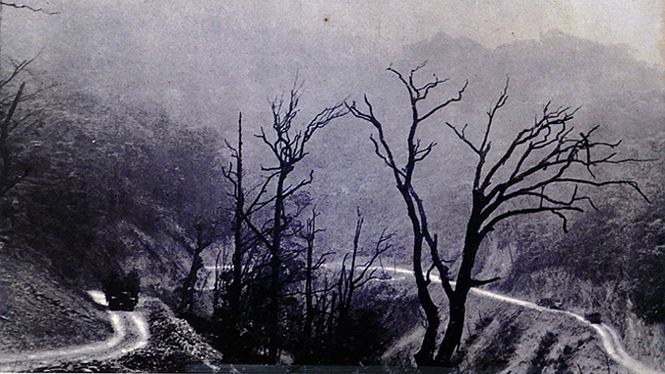
The US side admitted that they were losers in the Truong Son Trail as they failed to prevent us from constructing it.
Some foreigner asked me “How did you live and fight to win? I responded “We, Vietnamese people, always lived for the great career of the Party and State.
We kept in our mind Uncle Ho’s teachings that “Rivers could be drained, mountains could be worn, but the liberation of the South and national reunification are unchangeable missions”. If the enemy was strong in weapon, we were strong in spirit.
Reporter: What do you think about the significance of the Truong Son Trail to the whole struggle against the US?
Major General Nguyen Ba Tong: The significance and role of the Truong Son Trail were great. It showed the strategy and tactics of the Party as well as the strong will of the Truong Son soldiers.
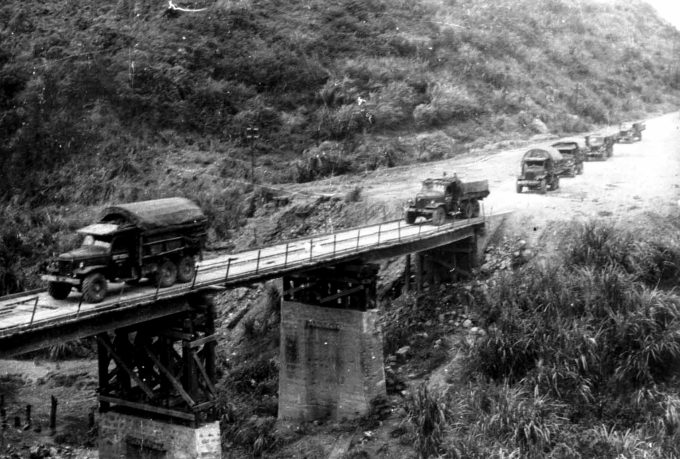
The trail not only linked the great rear of the North and the southern battlefield, but served as a connection point of the three Indochinese countries.
Reporter: After 60 years, the legendary trail has a new mission of serving the country’s industrialization and modernization. It plays an important role in promoting the growth of the western region of the country. What are your feelings whenever you visit the road again?
Major General Nguyen Ba Tong:Each time I return to the former battlefield where I spent my whole youth, it is hard to describe my feelings. The life along the trail has changed a lot, so do the rivers, streams and villages. Looking at children playing on the river banks innocently, I feel peaceful.
The extension of the Ho Chi Minh Road from Cao Bang to Ca Mau on the foundation of the trail has created a motivation for the economic development of the country and localities along the road in particular. This is like a thank-you to those who sacrificed their all for the trail.
Thank you very much!
The legend of a trail in numbers
Road for automobiles
Within 10 years from 1965-1975, Truong Son soldiers managed to open a multi-line road with a total length of 20,000km with five vertical and 21 horizontal axes.
Oil pipeline
From 1968, Truong Son soldiers started erecting an oil pipeline from Nam Dan district in the central province of Nghe An. In 1973, the pipeline reached Bui Gia Map in the southern province ofBinhPhuoc. The 1,400km pipeline had 113 pumping stations, and 33 petrol distribution stations, ensuring the flow of petrol from the north to battlefields over 100km from SaiGon.
Camouflaged line
From the 1971-1972 dry season, in order to deal with AC130 the enemy’s aircraft equipped with infrared rays that allow them them to detect targets at night, Truong Son soldiers opened the trail in deep jungles covered by big trees. In areas with few trees, they camouflaged the road with tree branches so that vehicles can move in day time, raising the transport speed by 2-3 times compared to the speed recorded at night. The special road was 3,000km long.
Waterway
A nearly 500m waterway was used to send goods from the upstream waters to downstream.
Information system
In order to ensure smooth direction in a 132,000 sq.km area, the Truong Son soldiers built an information system from the east and the west of Truong Son mountain range to LocNinh, along with a radio telegraph system and a wire system to all units.
The system made sure the direct direction from the Ministry of Defence to the Truong Son High Commandand units in the whole battlefield in a smooth, secret and timely manner.
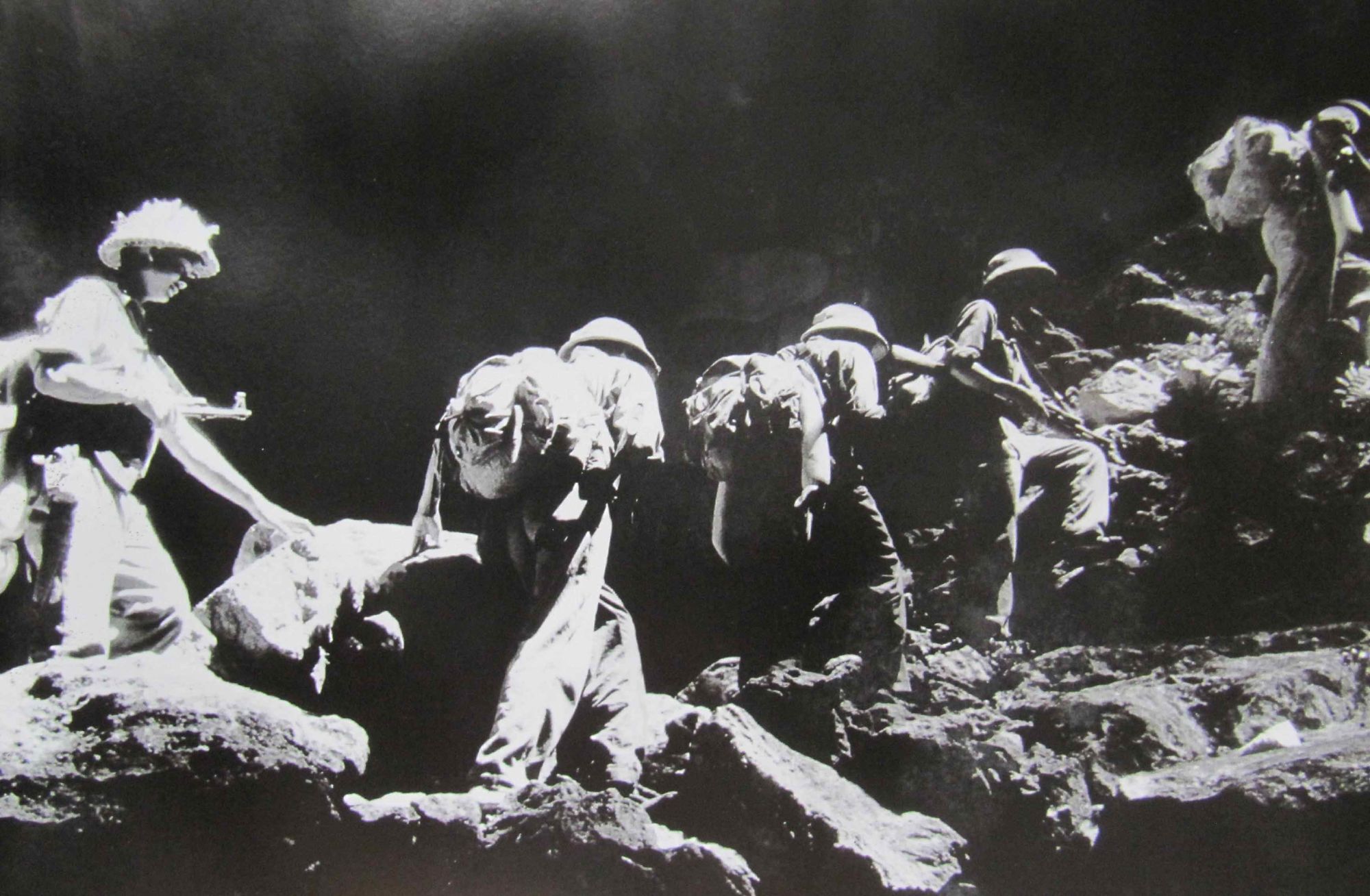
Female drivers in their twenties
Bui Thi Van, a 73 year-old veteran, still clearly remembers memories of the days when she drove trucks to transport bullets and supplies through the Truong Son Trail. Pointing to a black-and-white picture with young ladies standing by a Gaz 51 truck, she smiled and said “When the Nguyen ThiHanhfemale driver platoon was established, we were still in our twenties, innocent without any doubt of death.”

She said that when she was 16, she secretly registered to enter the youth volunteer force without telling their parents who cried a lot on the day she left for the battlefield.
Three years involving in the road construction, Vanthoroughly understood the cruel of the war.Some mornings, the young girl woke up and all she saw was smoking blackholes left by the enemy’s bombs.
In 1968, the war escalated. Corp 559 recruited some female youth volunteers to drive trucks to carry supplies and soldiers to the battlefields. Van and some of her fellows wrotea letter to volunteer to join.

At the end of that year, a truck carrying Van and a dozen of females in their twenties headed to Thanh Hoa, Nghe An. They sang all the way long.
At that time, we were all young and fearless. All we thought about was contributing to the nation and the common fight of the nation. Heading to the battlefield, we felt happy like enjoying Tet (Lunar New Year),” Nguyen Thi Kim Quy, who resides in Dao Tan street of Hanoi, recalled.
They took a 45-day training course in ThanhHoa and Nghe An. But they all mastered the driving skills only after one month.
On December 18, 1968, a female driver platoon named after Hero Nguyen Thi Hanh was formed in Hung Pho commune, Huong Khe district of Ha Tinh province, with 45 young girls. They were tasked to transport food, medicine and guns from Nghe An to the north bank of Gianh River in QuangBinh province, and carry wounded soldiers back to the north for treatment. Sometimes, they had to drive deeply to the land of Laos.
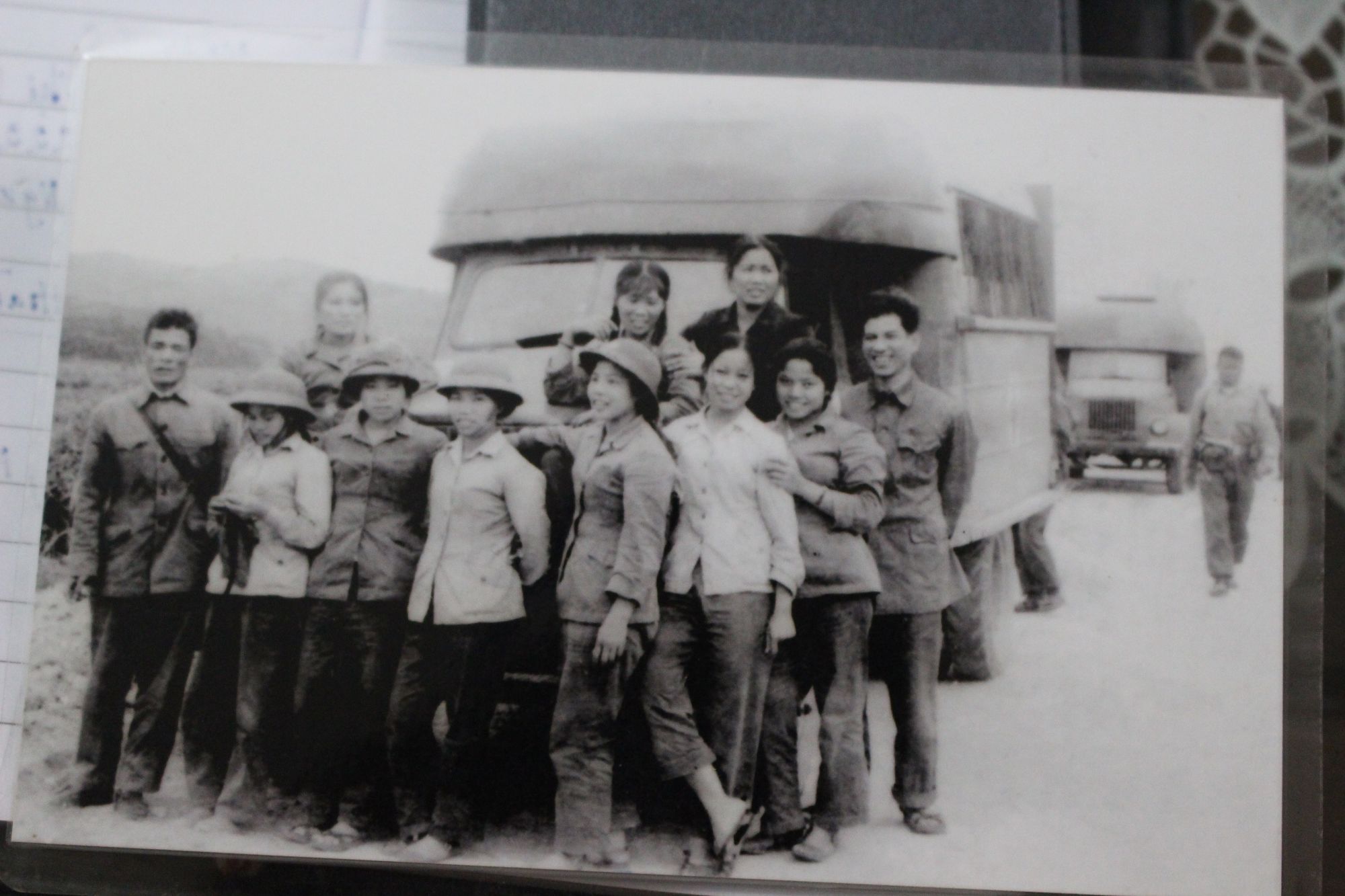
Showing us a list of her fellow comrades, Van said that Xuan, the youngest girl in the platoon, was only 18 then, while the oldest was Phong, 23. However, when performing their tasks, the 45 girls became brave soldiers.
Driving through the road of fire
After some minutes of silence, Van started talking about her first days as a driver.
“Although passing the training course, we were still afraid during first trips.”

Initially, we were “escorted” by trucks driven by male drivers. At night, to ensure safety, only one light beneath the truck was turned on, only enough to light up about one metre ahead the truck. Driving stressfully, their clothes became wet with sweat. However, they became familiar with the route right after one or two trips.
One time, on the way carrying wounded soldiers back to Vinh, Van’s truck was detected by US aircraft. From the trunk of the truck, the soldiers shouted out loudly “run, just leave us, we are already wounded, it’s no matter if we die. You just run!”
“At that moment, I was scared. But I thought that the soldiers left their blood and parts of their bodies in the battlefield, I must save them at any cost. I cannot leave them,” Van said.
After that, she made a turn to a small road where she met a group of engineers who carried the soldiers into a safe shelter.
Van never forgets the day in 1969 when she thought she would stay in the road forever. Her truck was bombed, but luckily, her teammate saved her from the destructed vehicle.

Despite the fragile border between life and death, all the 45 female drivers managed to survive.
After more than 50 years, they regularly gathered together to recall the old stories that stay forever in the mind of the heroic drivers.
The Truong Son female driver platoon was the only of its kind formed in the two resistance wars. It was also the only unit performing the duty of training female drivers of the military. In 1970, the State Council presented the platoon with the Feat-of-Arms Order, third lass, while 28 drivers were awarded third-class Resistance Order. In 2014, the Platoon C13 of female drivers received the titled of “the Hero of the People’s Armed Forces in the anti-US resistance war”. Head of the platoon, PhungThiVien, was posthumously awarded the title of “Hero of the People’s Armed Forces”.

Legendary Truong Son: Untold stories of girls “made of steel”
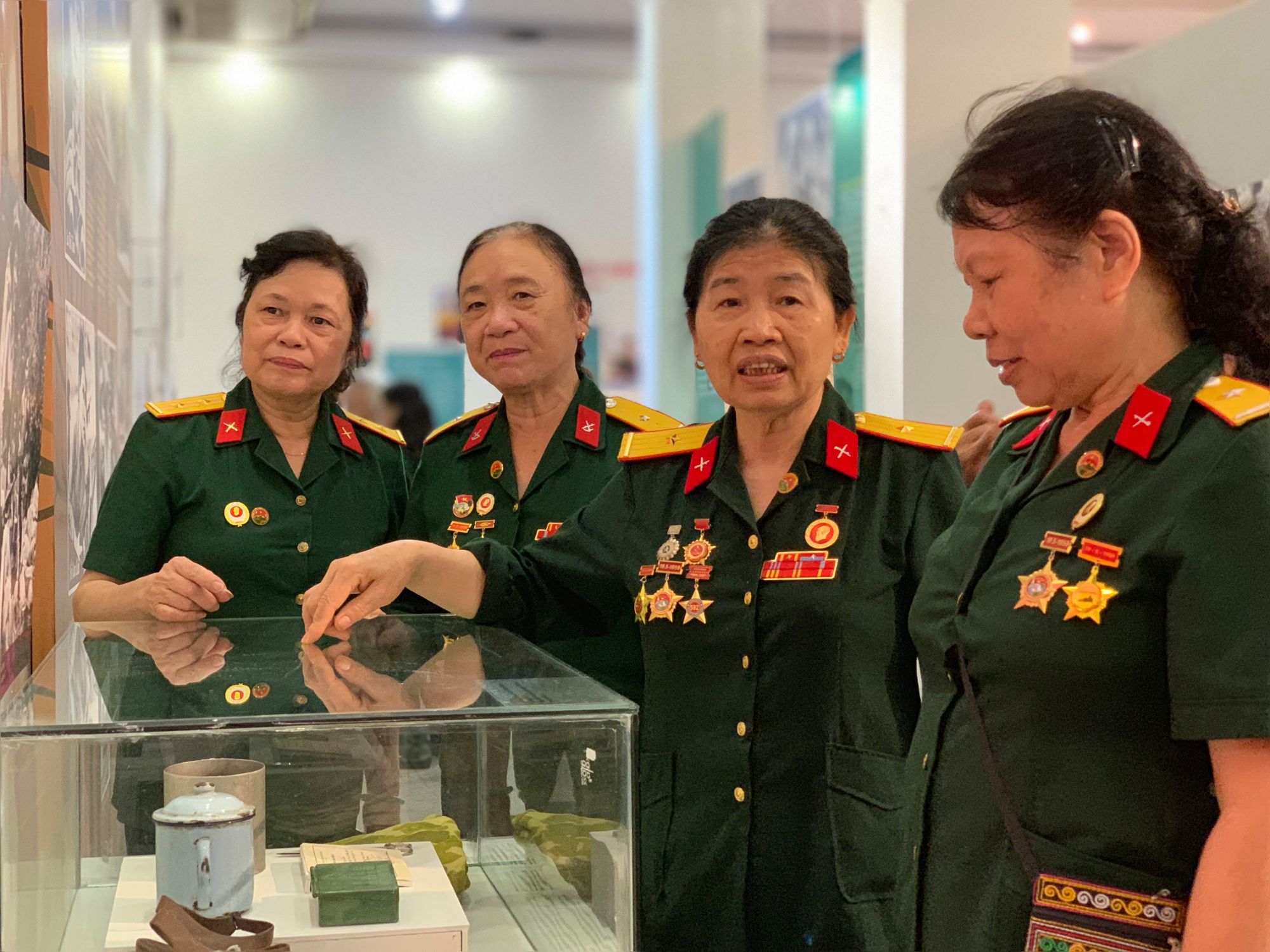
Talking about the female engineering soldiers, General Vo Nguyen Giap said that “They are not ordinary persons. In such places, only iron and steel can bear.” He then named them “the platoon of steel female engineering soldiers”.
Untold feelings
Under the deep jungles of the Central Highlands, female soldiers fighting in Truong Son line of fire experienced various extreme feelings from love, hate, obsessed, loss, fear, and brave.
All the feelings filled the hearts of the tiny but strong girls amidst the deadly war, contributing to forming a generation of heroines of the nation.
Countering bombs and guns and even death was not their fear. But inside the white blouses or behind the steering wheel was very “girly” fears. They were afraid of insects, ghost, and hair fall.

“Having no time to care for our hair and suffering from malaria, our hair fell seriously, some of us became bold. Many were so frightened that they avoided combing,” said Nguyen ThiOanh from Corp 559, adding that it was horrible for the female soldiers during their period.
Women with “cooper feet, steel shoulders”
Recalling the old stories, Nguyen ThiHuan from C2, Battalion 232, Logistics Department of Military Zone 5, said: “Each year, I transported about 20 tonnes of goods on my shoulders, three times higher than my fellow teammates could do when I was only 17 years old. When I was 18, I received the title of “cooper feet, steel shoulders.”
“In 1969, there was a canon weighing nearly 100kg. It was too heavy that no one could transport, except for me. After nights of thinking, I tied the canon in a plain plank and had my teammate place it on my back. I was supported by two of my teammates along the way. During four days of transporting the cannon, except for sleeping time, I carried the cannon on my back all through the way even when I ate as if I removed it, it would be hard to place it on my back again.”

This is just one of the stories of the female soldiers who used the strength of their youth and spirit to become undefeatable soldiers when the nation needed them.
In a letter to her sister, which was dated February 25, 1968, martyr Nguyen Thi Ngoc Tuan wrote “our last march was really hard. We had to pass a small path on the top of a mountain that only fit one person. If we are not skillful enough, we will fall down to Long Dai River and die if we meet someone moving in the opposite direction.”
“Loading heavy goods on our back, we had to climb very high slopes. Sometimes we spent the whole day and night to overcome just one slope. This March, we will have to conquer a slope with 1,300 steps to the peak where we, standing in the middle of the south, can see Laos and the north. It would be beautiful.”
For those who took the charge of building roads and bridges, the soldiers had to carry stones with them to fill holes left by bombs.

In March 1973, during a visit to Platoon B3 of Corp 559, General Vo Nguyen Giap said: “You are not ordinary persons. In such places, only iron and steel can bear.” He then named them “the platoon of steel female engineering soldiers”.
It is hard to say whether the historical conditions created the heroines or the heroines themselves were born to savage the nation.
Years after the war was gone, the female soldiers have still contributed to the national construction and development, as they always have the “Truong Son pride,” while conducting activities to care for their teammates who laid down their lives in the battlefield.
According to General Vo Nguyen Giap, the Truong Son Trial, or Ho Chi Minh Trial, is a great work manifesting the determination, energy as well as bravery and creativity of the nation in providing supplies to the great front line. It is among strategic factors deciding the success of the struggle against the US.

Museum keeps memories of Truong Son Trail
The Ho Chi Minh Trail Museum is now the only place that keeps the souvenirs and memories of the Truong Son-Ho Chi Minh Trail.
With an indoor exhibition space of 2,700sq.m, the museum provides visitors with a miniature Truong Son Trail, giving them a better understanding of the sacrifice by those who once “tear down the Truong Son to save the nation”.
